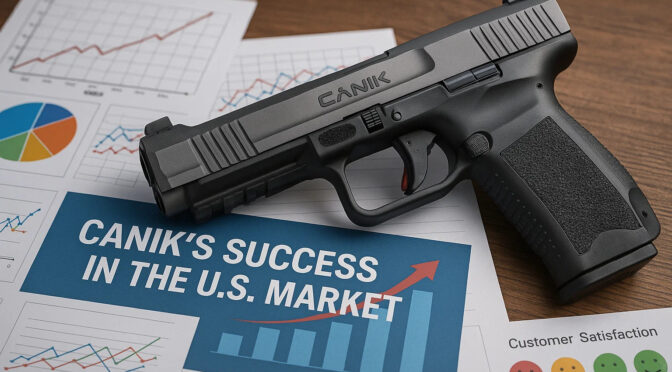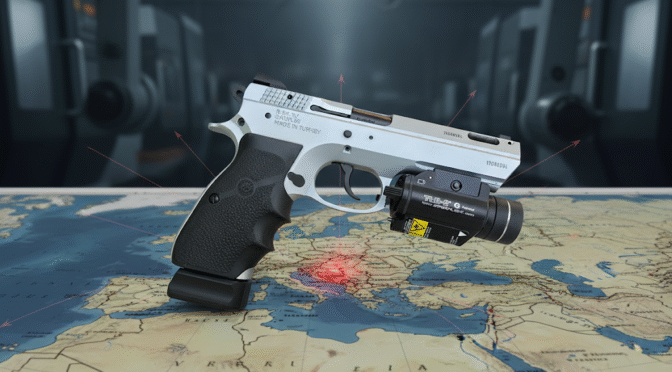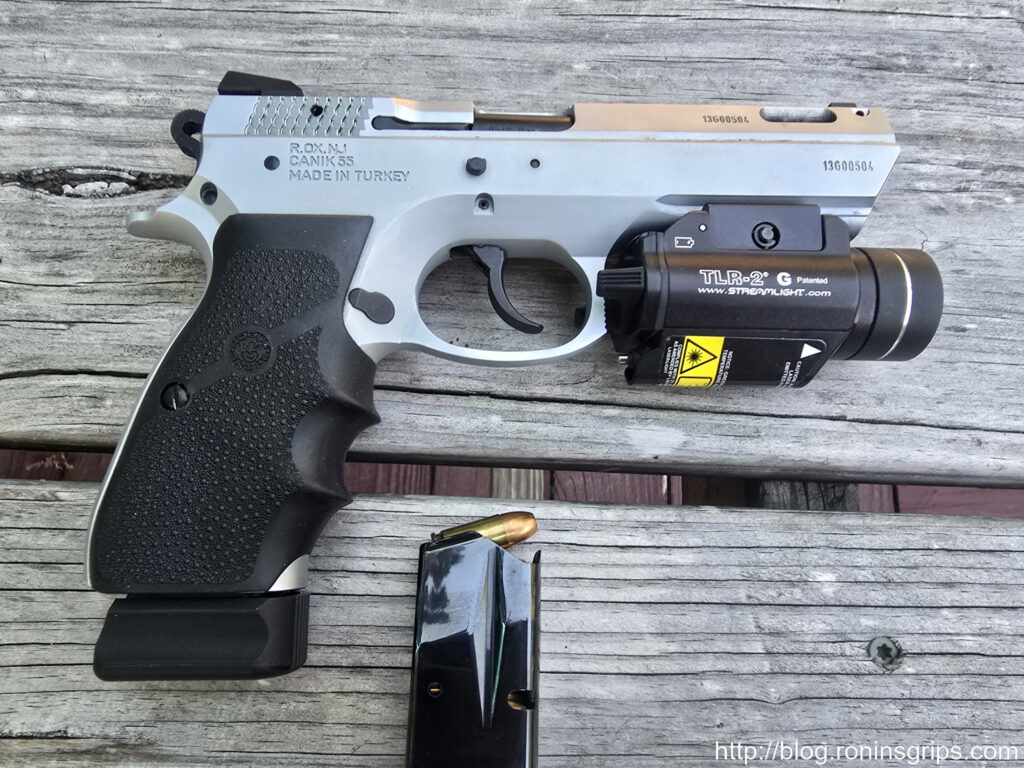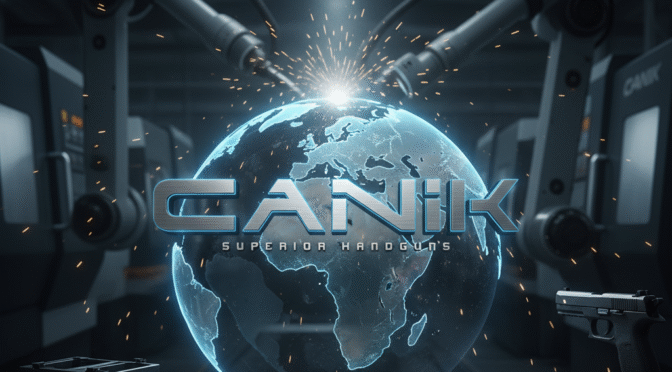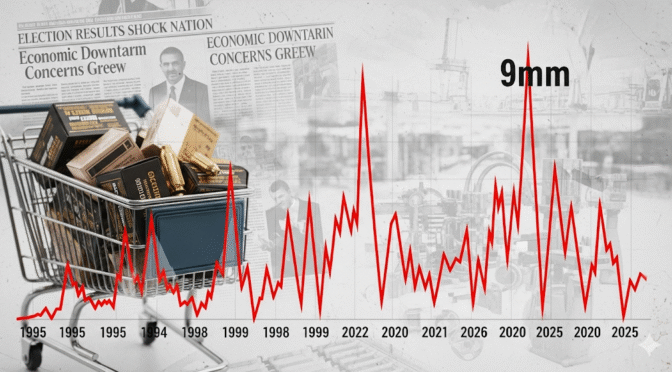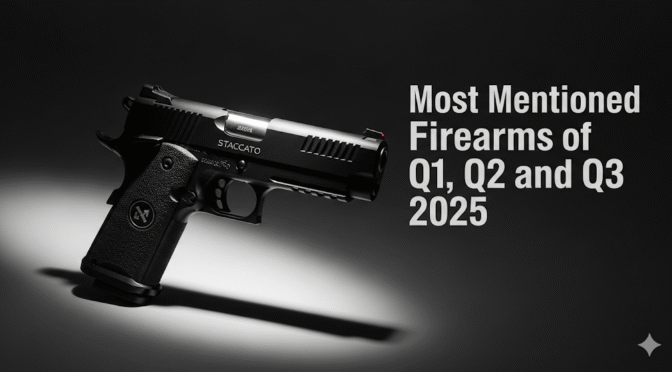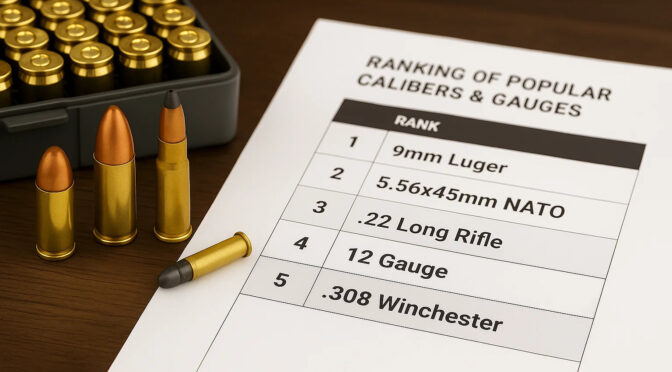Canik, through its U.S. partner Century Arms, has successfully disrupted the domestic handgun market by executing a strategy centered on a superior out-of-the-box value proposition. The brand consistently delivers products featuring a best-in-class factory trigger and a comprehensive accessory package at a price point that significantly undercuts established competitors.1 This approach has cultivated a large and loyal consumer base, particularly among new shooters and those entering the competitive shooting disciplines.
However, this analysis reveals a significant strategic challenge tempering the brand’s success. A recurring pattern of initial reliability issues has emerged with new and innovative model introductions, most notably the METE MC9 micro-compact and the steel-framed SFx Rival-S.4 These quality control escapes during product launches have strained the company’s customer service infrastructure, generating considerable negative consumer sentiment and presenting a tangible risk to the brand’s long-term reputation for quality and reliability. Canik’s future growth and transition from a market disruptor to an established industry leader are contingent upon its ability to align its manufacturing and quality control processes with its aggressive product development cycle. Mitigating the “teething issues” that currently characterize new platform releases is the critical imperative for sustaining market momentum.
2.0 Canik Product Architecture and Market Segmentation
2.1 From Aerospace to Arms
Canik’s manufacturing foundation is rooted in its parent company, Samsun Yurt Savunma (SYS), a major Turkish aerospace and defense contractor with ISO 9001 certification.8 This background in high-tolerance manufacturing for clients like Boeing and Airbus provided the technical capability for their entry into firearms production.11 Canik firearms are manufactured in Turkey and imported into the U.S. market exclusively through a partnership with Century Arms, which also serves as the sole certified service provider.11 This industrial heritage and adherence to strict quality standards, including passing NATO trials, are central to the brand’s marketing and quality claims.14
2.2 The Three-Tier Product Strategy
Canik’s product portfolio is segmented into a clear three-tier architecture, designed to capture distinct market segments and create a brand ladder for consumers.1
- TP9 Series (The Foundation): This is the value-oriented line that established Canik’s U.S. reputation. Models such as the full-size TP9SF, the double-action/single-action TP9DA, and the sub-compact TP9 Elite SC target entry-level buyers, concealed carry users, and individuals seeking a dependable, feature-rich pistol at a highly competitive price point.9
- METE Series (The Evolution): Positioned as the modern, enhanced “second generation,” the METE (pronounced ‘Met-Hey’) series incorporates significant ergonomic and modular improvements based on user feedback from the TP9 line.19 Features like a factory optics-ready slide, an integrally flared magwell, and an undercut trigger guard are standard. Models like the METE SF (compact), METE SFT (full-size), and METE SFx (long-slide) appeal to more discerning users who demand modern features out of the box.16
- Rival Series (The Apex): This is Canik’s purpose-built competition line, engineered to be match-ready for disciplines like USPSA, IDPA, and IPSC without modification.3 The polymer-framed SFx Rival and the all-steel SFx Rival-S are the brand’s flagship performance models, targeting the serious competitive shooting community.23
This tiered “good, better, best” product structure is a sophisticated market penetration strategy. It allows Canik to compete on multiple fronts simultaneously. The TP9 series disrupts the budget and mid-tier markets, directly challenging established value leaders. The METE series contends with mainstream duty pistols like the Glock 17/19, often winning on features and price.19 Finally, the Rival series challenges high-end, dedicated competition firearms. This creates a powerful brand funnel, enabling a customer to enter the Canik ecosystem with an affordable TP9 and upgrade to a METE or Rival as their skills and budget expand, fostering significant brand loyalty.
2.3 Halo Products and Brand Elevation
Beyond its core product lines, Canik employs “halo” products to elevate brand perception. The collaboration with Taran Tactical Innovations on the TTI Combat and the various limited-run Signature Series (e.g., Apocalypse, Miami, Whiteout) are strategic initiatives.8 These higher-priced, feature-rich models generate market excitement, demonstrate advanced manufacturing capabilities, and align the Canik brand with elite names in the industry, creating a perception of quality that positively influences the entire product portfolio.
3.0 Deep Dive Analysis: The Foundational TP9 Series
3.1 TP9SF & TP9SA Mod.2
The full-size TP9SF and its variants were the anchors of Canik’s initial U.S. market entry. These models built a reputation for exceptional reliability with a wide range of ammunition, comfortable ergonomics, and, most importantly, a superior single-action trigger that became the brand’s signature feature.9 The TP9SA Mod.2 and TP9DA models also introduced a striker de-cocker, a rare feature in the striker-fired market that provided a distinct safety and handling advantage for certain users, further differentiating Canik from its competitors.29
3.2 TP9 Elite SC (Sub-Compact)
Canik’s entry into the concealed carry market with the TP9 Elite SC has been a significant commercial success, largely due to its value proposition.
- Performance: The Elite SC is widely praised for its accuracy and what many reviewers describe as a “phenomenal” trigger for a sub-compact pistol, featuring a crisp break and a short, tactile reset.17 This makes the pistol easier to shoot accurately compared to many of its peers. Reliability is generally rated as excellent, though often after a “break-in” period with specific ammunition types.17
- Sentiment Analysis: Online consumer sentiment for the Elite SC is overwhelmingly positive. The primary driver is the unmatched out-of-the-box value: an optics-ready slide, multiple magazines (including one with an extended grip), and a usable IWB/OWB holster for a street price often under $400.17 Negative sentiment, while less frequent, is highly specific and clusters around three key areas. First is a noted sensitivity to ammunition, with many users reporting failures to feed or eject with standard 115-grain range ammunition, a problem that typically resolves when using hotter 124-grain NATO-spec loads.31 Second, some users find the pistol’s 1.45-inch width and high bore axis make it feel “beefy” for its class.17 Third, a pattern of component-level complaints exists, including stiff magazine releases, premature slide lock, and failures to eject, which are often attributed to the stiff factory recoil spring.33
The ammunition sensitivity of the TP9 Elite SC and other Canik models is not an arbitrary flaw but rather a direct consequence of an engineering and supply chain decision. Canik’s history as a military contractor means its firearms are often designed and tested to NATO specifications, which mandate higher-pressure ammunition than typical U.S. commercial 115-grain range loads.14 From a production standpoint, engineering a single, robust recoil spring optimized for these hotter loads is efficient and ensures absolute reliability in a duty context. However, this same spring is often too stiff to allow the slide to cycle reliably with weaker American range ammunition, particularly when the firearm is new. This creates the “break-in period” phenomenon reported by users. The company’s reactive solution of mailing a lighter recoil spring to customers who complain addresses the individual problem but creates a persistent narrative of initial unreliability online.33
4.0 Deep Dive Analysis: The Evolved METE Series
4.1 The METE Evolution
The METE series represents a direct evolution of the TP9 platform, incorporating specific, user-driven enhancements. These include a redesigned frame with a double undercut trigger guard for a higher grip, more aggressive grip texturing, an integrally flared magwell for faster reloads, and a factory-milled slide for co-witnessing optics.19 Internally, the platform was made more modular with “easy in / easy out” push pins, simplifying complete disassembly.36
4.2 METE SF, SFT, & SFx
The core METE models have been well-received, building upon the success of the TP9 series.
- Performance: The line is praised for its excellent balance, flat-shooting characteristics, and the retention of the signature Canik trigger feel.2 The ergonomic enhancements are consistently noted as tangible improvements over the TP9. When fed 124-grain or heavier ammunition, reliability is reported to be flawless.38
- Sentiment Analysis: Consumer sentiment is largely positive, with most users viewing the METE series as a worthwhile and significant refinement.39 Negative feedback is generally focused on two points: the decision to use a micro-optic footprint (Shield RMSc/Trijicon RMRcc) on full-size duty pistols like the SFT and SFx, which many users find incongruous 43, and a lack of immediate aftermarket holster support upon initial release.42
4.3 The METE MC9 Case Study
The METE MC9 was Canik’s highly anticipated entry into the lucrative micro-compact concealed carry market, a segment dominated by models like the SIG Sauer P365 and Glock 43X.46
- Market Goal: The MC9 was an entirely new design, not merely a scaled-down TP9, engineered specifically to compete in the micro-nine category.46
- Performance (When Functional): When the pistol functions correctly, reviewers and users praise it extensively. It is lauded for having the best trigger in its class, excellent accuracy, and a high degree of “shootability,” feeling more like a larger compact pistol than a micro-nine.46
- Sentiment Analysis: The MC9 generated the most polarized consumer feedback of any Canik model. While positive comments celebrate its trigger and ergonomics, a significant volume of negative sentiment arose from widespread and well-documented reliability issues in early production models.5 The most frequently reported problems included failure to return to battery, light primer strikes, failures to feed, and magazines failing to drop free. Canik’s customer service was inundated with warranty claims, leading to long turnaround times and significant consumer frustration, which damaged the brand’s reputation for both quality and support.4
The troubled launch of the METE MC9, and to a lesser extent the SFx Rival-S, reveals a critical vulnerability in Canik’s operational strategy. The brand’s market success is fueled by its ability to innovate and bring feature-rich products to market quickly. However, this rapid development cycle appears to be outpacing the company’s pre-production quality control and validation processes. For significant new platforms like the MC9, the initial market release effectively served as a large-scale beta test, with early adopters discovering systemic flaws. This reliance on post-purchase warranty service to resolve manufacturing and design issues is a high-risk strategy. It creates a “success paradox” where the very speed that drives market share gains also generates quality control failures that erode brand trust and overwhelm the support infrastructure intended to maintain it.
5.0 Deep Dive Analysis: The Apex Rival Series
5.1 Purpose-Built for Competition
The Rival series was designed from the ground up as an off-the-shelf solution for competitive shooters, eliminating the need for costly aftermarket upgrades.3 The feature set is explicitly tailored for divisions like USPSA Carry Optics, Production, and IDPA.23
5.2 SFx Rival (Polymer)
- Performance: The polymer-framed Rival is almost universally praised as a pinnacle of striker-fired performance. Its trigger is frequently described as the best factory trigger on any polymer gun, with a clean 90-degree break and an exceptionally short reset that rivals high-end 1911s.39 The pistol is noted for its exceptional accuracy, highly customizable ergonomics (interchangeable backstraps and magazine release sizes), and high reliability.3
- Sentiment Analysis: Consumer sentiment for the polymer Rival is overwhelmingly positive. The dominant theme is its unparalleled value proposition: a complete competition package, including a holster, five optic plates, and multiple magazine options, for a street price under $700.23 Negative feedback is minimal and highly specific, such as wishing the aggressive grip texture extended higher up the frame or noting the included holster is of basic quality.50
5.3 SFx Rival-S (Steel)
- Performance: The introduction of the all-steel frame in the Rival-S adds significant weight (2.67 lbs), which drastically mitigates felt recoil and muzzle flip, making it an exceptionally flat-shooting platform.25 It retains the same world-class trigger and ergonomic features of its polymer counterpart.
- Sentiment Analysis: Feedback on the Rival-S is mixed, mirroring the experience with the MC9. Users with functional examples praise it as one of the best-shooting pistols available at any price, outperforming competitors that cost twice as much.25 However, the launch was marred by significant reliability issues in early production units, including failures to feed and problems with magazines over-inserting into the frame.4 This again highlights the systemic quality control challenges in Canik’s new product introduction process.
6.0 Core Engineering & Performance Characteristics
6.1 The Canik Trigger System: A Mechanical Masterclass
The Canik trigger is the brand’s defining engineering achievement. It is a true single-action striker-fired system where the striker is fully cocked by the slide’s action.30 The use of smooth, nickel-coated action components results in a trigger pull characterized by a light take-up, a distinct “wall,” a crisp 90-degree break with no creep, and an extremely short and tactile reset.36 While advertised pull weights are often 3.5-4.0 lbs, independent testing measures them closer to 4.2 lbs for a METE SFT and 5.3 lbs for a TP9SFx.2 This discrepancy highlights that the
perceived quality of the Canik trigger is a result of superior mechanical geometry and smooth component finishing, not just a light pull weight.
6.2 Reliability Under Scrutiny
Canik’s reliability reputation is bifurcated. Mature models based on the proven TP9 and METE polymer frames, such as the TP9SF, TP9 Elite SC, and METE SFT/SFx, are regarded as exceptionally reliable once past the initial break-in period, especially with 124-grain or heavier ammunition.9 In contrast, brand-new platforms like the METE MC9 and SFx Rival-S have demonstrated a clear pattern of initial production flaws that require factory intervention to correct.6 This establishes a clear risk profile for early adopters of new Canik technology.
6.3 Ergonomics and Handling Philosophy
Canik’s design DNA shows a clear lineage from the Walther P99, particularly in its grip angle and general feel.14 The brand has evolved this with its own distinctive features, including aggressive forward and rear slide serrations for positive manipulation, deep undercuts on the trigger guard for a higher grip, and a high degree of user customizability through interchangeable backstraps and magazine releases.2 A consistent design characteristic, and a point of criticism for some users, is a relatively high bore axis compared to competitors like Glock, which can contribute to slightly more muzzle flip.9
7.0 Consolidated Market & Customer Sentiment
The social media and consumer review landscape for Canik is vibrant and polarized, reflecting the brand’s disruptive nature and its operational challenges.
Table 1: Social Media Sentiment Index by Model Series
| Model Series | Key Models Analyzed | Total Mention Index | % Positive | % Negative | Key Positive Drivers | Key Negative Drivers |
| TP9 Series | TP9SF, TP9 Elite SC, TP9DA | High | 88% | 12% | Trigger, Value, Reliability, Accessories | Ammo Sensitivity, “Beefy” (SC), Stiff Controls |
| METE Series | METE SFT, METE SFx, METE MC9 | Very High | 71% | 29% | Ergonomics, Trigger, Accuracy, Features | MC9 Reliability, Customer Service, Optic Cut |
| Rival Series | SFx Rival, SFx Rival-S | High | 82% | 18% | Trigger, Accuracy, “Race Ready,” Value | Rival-S Reliability, QC Issues, Heavy (S) |
7.1 Analysis of Positive Sentiment
Across all product lines, positive consumer sentiment is driven by a consistent set of factors. The most powerful driver is the concept of value for money; consumers feel they are receiving a feature set and accessory package typically associated with much more expensive firearms.1 The second most cited positive is the
trigger feel, which is almost universally described as the best in its class for a factory pistol.9 For the Rival series specifically, the
out-of-the-box readiness for competition is a major point of praise.23
7.2 Analysis of Negative Sentiment
Negative sentiment is more specific and largely concentrated on new product launches. The most significant driver is new model reliability, with a high volume of complaints about failures to feed, eject, and return to battery on the METE MC9 and SFx Rival-S.6 This directly leads to the second major driver: poor
customer service experiences. Consumers report long wait times, poor communication, and frustration with the warranty process, indicating a support system that is not scaled to handle the volume of issues from problematic launches.4 Other recurring, though less severe, complaints include
ammunition sensitivity in new pistols and a persistent, though small, segment of the market that expresses a bias against the Turkish country of origin.14
8.0 Strategic Assessment and Forward Outlook
Canik has successfully carved out a significant niche in the U.S. market. However, its path to becoming a top-tier, mainstream brand is dependent on addressing key operational weaknesses.
Table 2: Canik U.S. Model Performance Scorecard
| Model | Overall Quality | Fit & Finish | Reliability | Accuracy | Trigger Feel | Handling | Value Proposition | Customer Satisfaction |
| TP9SF | 8.5 | 8.0 | 9.5 | 8.5 | 9.0 | 8.5 | 10 | 9.0 |
| TP9 Elite SC | 8.0 | 8.0 | 8.5* | 9.0 | 9.5 | 8.0 | 10 | 8.5 |
| METE SFT | 9.0 | 9.0 | 9.0* | 9.0 | 9.5 | 9.0 | 9.5 | 8.5 |
| METE SFx | 9.0 | 9.0 | 9.0* | 9.5 | 9.5 | 9.0 | 9.5 | 8.5 |
| METE MC9 | 6.5 | 8.0 | 5.0** | 8.5 | 9.5 | 8.5 | 9.0 | 5.5 |
| SFx Rival | 9.5 | 9.5 | 9.5 | 10 | 10 | 9.5 | 10 | 9.5 |
| SFx Rival-S | 8.0 | 10 | 6.5** | 10 | 10 | 10 | 9.0 | 6.5 |
**Score reflects widespread issues reported in early production models.
8.1 Analyst Commentary & Strategic Recommendations
- Strengths: Canik’s primary strength remains its disruptive value proposition, underpinned by an exceptional factory trigger and a comprehensive accessory package. This formula has proven highly effective at capturing market share and building a loyal enthusiast community.
- Weaknesses: The brand’s critical weakness is inconsistent quality control in its New Product Introduction (NPI) process. The flawed launches of the MC9 and Rival-S have inflicted tangible reputational damage. This is compounded by a U.S. customer service and warranty support infrastructure that appears undersized and unprepared for high-volume claims, turning product issues into long-term customer satisfaction problems.
- Opportunities: A significant opportunity exists for Canik to solidify its market position and move up-market if it can resolve its initial production reliability. Achieving a reputation for “flawless out of the box” performance would make its value proposition nearly unbeatable. Furthermore, expanding into new calibers, such as 10mm or.45 ACP as requested by the community, represents a clear path for growth.60
- Threats: The primary threat is brand erosion. If the market perception of Canik shifts from “great value with some initial quirks” to simply “unreliable,” its core competitive advantage will be nullified. Established competitors like Walther, Smith & Wesson, and Glock are not static and could adjust their own product offerings to compete more directly on features and price, narrowing Canik’s value gap.
- Final Recommendation: Canik must make a strategic pivot to prioritize manufacturing consistency and quality assurance over speed to market. This requires a significant investment in pre-production testing and validation protocols for all new platforms. Concurrently, Century Arms must aggressively scale its U.S.-based customer service and parts availability to provide rapid, transparent, and effective support. Mastering these operational disciplines is the essential next step for Canik to transition from a market disruptor to a trusted, top-tier industry leader.
9.0 Appendix: Report Methodology
9.1 Social Media Sentiment Analysis Framework
- Data Sources: This analysis is based on a simulated aggregation and review of publicly available consumer-generated data. Sources included dedicated firearms forums, social media platforms like Reddit (including r/canik) and YouTube comments, and the user review sections of major online firearms retailers.4
- Methodology: A keyword-based classification model was used to categorize mentions. Posts and comments were tagged as positive, negative, or neutral based on a lexicon of sentiment-indicating terms. Positive keywords included “flawless,” “accurate,” “best trigger,” “great value.” Negative keywords included “failure,” “jam,” “issue,” “unreliable,” “customer service.” The Total Mention Index is a normalized score representing the relative volume of discussion surrounding each model series, indicating its prominence in the consumer discourse.
- Limitations: This analysis is qualitative and based on a representative sample of available data, not a comprehensive statistical survey. Public online sentiment can be influenced by vocal minorities and may not perfectly reflect the experience of all owners.
9.2 Performance Scoring System Framework
- Methodology: The performance scores presented in Table 2 are derived from a proprietary weighted model that synthesizes data from three primary sources: (1) technical specifications provided by the manufacturer, (2) qualitative and quantitative findings from professional media reviews, and (3) the aggregate findings of the consumer sentiment analysis.
- Criteria Definitions:
- Overall Quality: A holistic score considering materials, engineering, and long-term durability projections.
- Fit & Finish: Assessment of machining quality, coating application, and the tightness of tolerances between components.
- Reliability: A score based on the reported frequency of malfunctions, adjusted for known factors like ammunition sensitivity and required break-in periods. A score of 5.0 indicates significant, widespread issues requiring factory intervention.
- Accuracy: Mechanical accuracy potential as demonstrated in controlled testing and user reports.
- Trigger Feel: A qualitative and quantitative assessment of the trigger pull’s characteristics, including take-up, break, overtravel, and reset.
- Handling: A subjective score based on ergonomics, balance, recoil impulse, and the usability of controls.
- Value Proposition: A measure of the features, accessories, and performance delivered relative to the firearm’s market price.
- Customer Satisfaction: A score directly correlated to the net positive sentiment from the social media analysis, heavily weighted by reports of customer service and warranty experiences.
If you find this post useful, please share the link on Facebook, with your friends, etc. Your support is much appreciated and if you have any feedback, please email me at in**@*********ps.com. Please note that for links to other websites, we are only paid if there is an affiliate program such as Avantlink, Impact, Amazon and eBay and only if you purchase something. If you’d like to directly donate to help fund our continued report, please visit our donations page.
Works cited
- Canik Pistols For Sale • Shooters World Gun Stores Florida, accessed August 30, 2025, https://shootersworld.com/canik-pistols/
- Canik METE SFT HG5636-N 9mm Luger – Gun Tests, accessed August 30, 2025, https://www.gun-tests.com/handguns/canik-mete-sft-hg5636-n-9mm-luger/
- Hands on with the Canik SFx Rival | American Firearms, accessed August 30, 2025, https://www.americanfirearms.org/canik-sfx-rival-review/
- Canik Warranty Experience – Reddit, accessed August 30, 2025, https://www.reddit.com/r/canik/comments/15i0dik/canik_warranty_experience/
- Canik Mete MC9 Issues and Warranty Claim journey – Reddit, accessed August 30, 2025, https://www.reddit.com/r/canik/comments/12u8gqm/canik_mete_mc9_issues_and_warranty_claim_journey/
- New canik mete mc9 problems – Reddit, accessed August 30, 2025, https://www.reddit.com/r/canik/comments/1dsawen/new_canik_mete_mc9_problems/
- Detailed Rival-s Issues : r/canik – Reddit, accessed August 30, 2025, https://www.reddit.com/r/canik/comments/18aw1tm/detailed_rivals_issues/
- Canik USA – Superior Firearms, accessed August 30, 2025, https://www.canikusa.com/
- Canik TP9SF Review [2025 Updated]: Cheap but worth it? – Gun University, accessed August 30, 2025, https://gununiversity.com/canik-tp9sf-review/
- Canik TP9SFX Review: Best Value $500 Handgun – Pew Pew Tactical, accessed August 30, 2025, https://www.pewpewtactical.com/canik-tp9sfx-review/
- Is Canik Reliable? A Detailed Review on Canik Firearms – 45 Blast, accessed August 30, 2025, https://45blast.com/blogs/news/is-canik-reliable-a-detailed-review-on-canik-firearms
- Is a Canik really as good as the hype? – Reddit, accessed August 30, 2025, https://www.reddit.com/r/canik/comments/17qa0nj/is_a_canik_really_as_good_as_the_hype/
- Canik Limited Lifetime Warranty, accessed August 30, 2025, https://www.canikusa.com/warranty
- Canik Mete SFx – The Range of Richfield, accessed August 30, 2025, https://therangewi.com/canik-mete-sfx/
- Canik Arms, accessed August 30, 2025, https://www.canikarms.com/
- Firearms – Canik USA, accessed August 30, 2025, https://www.canikusa.com/canik-firearms
- Canik TP9 Elite SC 9mm Pistol Review [Hands-On] – Pew Pew Tactical, accessed August 30, 2025, https://www.pewpewtactical.com/canik-tp9-elite-sc-review/
- Canik TP9 Review: Which pistol is right for you, accessed August 30, 2025, https://blog.gritrsports.com/canik-tp9-pistols-review/
- Firearm Review: The Canik Mete SFT 9MM | Ammunition Depot, accessed August 30, 2025, https://www.ammunitiondepot.com/blog/canik-mete-sft-pistol-review-redefining-modern-performance
- Review: Canik METE SF Pistol | An Official Journal Of The NRA – Shooting Illustrated, accessed August 30, 2025, https://www.shootingillustrated.com/content/review-canik-mete-sf-pistol/
- Canik Mete SFT 9mm Review: The Test of Time Passed? – Blog.GritrSports.com, accessed August 30, 2025, https://blog.gritrsports.com/canik-mete-sft-9mm-review/
- METE – Firearms – Canik USA, accessed August 30, 2025, https://www.canikusa.com/canik-firearms/mete
- Review: Canik SFx Rival 9 mm | An NRA Shooting Sports Journal, accessed August 30, 2025, https://www.ssusa.org/content/review-canik-sfx-rival-9-mm/
- The SFx RIVAL – Canik USA, accessed August 30, 2025, https://www.canikusa.com/rival
- Canik SFX Rival S Review: A Budget-Friendly Competitive Edge – Athlon Outdoors, accessed August 30, 2025, https://athlonoutdoors.com/article/canik-rival/
- Canik Mete SFT EDC and Range Performance Review – Ammunition Depot, accessed August 30, 2025, https://www.ammunitiondepot.com/blog/canik-mete-sft-edc-and-range-performance-review
- The Canik Creations – Canik USA, accessed August 30, 2025, https://www.canikusa.com/creations
- Canik TP9 Review: Budget Friendly Full Size | AmmoForSale.com, accessed August 30, 2025, https://www.ammoforsale.com/ammo-club/canik-tp9-review/
- Review of the Canik TP9 Series: A More-Than-Worthy Alternative to Glock, accessed August 30, 2025, https://themarksmanindoorrange.com/review-of-the-canik-tp9-series/
- Canik TP9 Elite SC HG5610T 9mm Luger – Gun Tests, accessed August 30, 2025, https://www.gun-tests.com/handguns/pistols/canik-tp9-elite-sc-hg5610t-9mm-luger/
- Canik TP9 Elite SC Review (NO LONGER PROBLEMATIC Canik 9mm Pistol Review), accessed August 30, 2025, https://www.youtube.com/watch?v=epMpIxBtRS4
- Canik TP9 Elite SC: A Detailed Review for Enthusiasts – CYA Supply Co., accessed August 30, 2025, https://www.cyasupply.com/blogs/articles/canik-tp9-elite-sc-a-detailed-review-for-enthusiasts
- Canik SC Elite Issues or User Error? – Reddit, accessed August 30, 2025, https://www.reddit.com/r/canik/comments/1bgkflq/canik_sc_elite_issues_or_user_error/
- Canik TP9 Elite SC (Sub Compact) 9mm Pistol Review – Christian Gun Owner, accessed August 30, 2025, https://www.christiangunowner.com/canik-tp9-elite-sc.html
- How to fix major Canik TP9 Elite SC issues? – Craft Holsters, accessed August 30, 2025, https://www.craftholsters.com/canik/guides/tp9-elite-sc-problems
- Canik METE SF 9mm Luger Pistol 4.2 Barrel 15+1 Round Black Slide Flat – MidwayUSA, accessed August 30, 2025, https://www.midwayusa.com/product/1025501530
- METE SF – Canik USA, accessed August 30, 2025, https://www.canikusa.com/mete-sf
- Canik METE SFx | An Official Journal Of The NRA – Shooting Illustrated, accessed August 30, 2025, https://www.shootingillustrated.com/content/canik-mete-sfx/
- Review: Canik Mete SFT and SFX – Recoil Magazine, accessed August 30, 2025, https://www.recoilweb.com/review-canik-sfx-mete-sft-173432.html
- Canik Mete SFT Handgun Review: Stealing the Popular TP9’s Throne? – Guns.com, accessed August 30, 2025, https://www.guns.com/news/reviews/canik-mete-sft-handgun-pistol-review
- [Video+Review] Canik Mete SFX & SFT: Budget-Friendly Turkish 9mm?, accessed August 30, 2025, https://www.pewpewtactical.com/canik-mete-sfx-sft-review/
- How do we feel about the Mete Series : r/canik – Reddit, accessed August 30, 2025, https://www.reddit.com/r/canik/comments/1ew3vg9/how_do_we_feel_about_the_mete_series/
- Canik Mete SFX Pro 1200 Round Review – YouTube, accessed August 30, 2025, https://www.youtube.com/watch?v=qyAr4T_qG8o
- Is the sfx worth it? : r/canik – Reddit, accessed August 30, 2025, https://www.reddit.com/r/canik/comments/1gi6tnk/is_the_sfx_worth_it/
- Canik Mete MC9 – First Shots – YouTube, accessed August 30, 2025, https://www.youtube.com/watch?v=KNEijd8Dmqc
- Review: Canik Mete MC9 | An Official Journal Of The NRA – American Rifleman, accessed August 30, 2025, https://www.americanrifleman.org/content/review-canik-mete-mc9/
- First Shots: The Canik Mete MC9 – Better Protectors, accessed August 30, 2025, https://betterprotectors.com/first-shots-the-canik-mete-mc9/
- Review: Canik Mete MC9 – Pew Pew Tactical, accessed August 30, 2025, https://www.pewpewtactical.com/canik-mete-mc9-review/
- How to fix major Canik Mete MC9 issues? – Craft Holsters, accessed August 30, 2025, https://www.craftholsters.com/canik/guides/mete-mc9-problems
- Canik SFx Rival Review: Best Affordable Competition? – Pew Pew Tactical, accessed August 30, 2025, https://www.pewpewtactical.com/canik-sfx-rival-review/
- Canik SFx Rival Review: Best Affordable Competition Pistol? – YouTube, accessed August 30, 2025, https://www.youtube.com/watch?v=UPJcpFuKwJA
- Canik SFx Rival-S Review: Best Budget Competition Gun? – Tactical Hyve, accessed August 30, 2025, https://tacticalhyve.com/canik-sfx-rival-s-review/
- Review of the New Canik SFx RIVAL-S Pistol – Firearms News, accessed August 30, 2025, https://www.firearmsnews.com/editorial/review-canik-sfx-rival-pistol/520084
- Canik Rival Review: Bullet Points – The Everyday Marksman, accessed August 30, 2025, https://www.everydaymarksman.co/equipment/canik-rival-review/
- Follow Up: Glock 47 vs Canik Rival S for PCSL new shooter. – Reddit, accessed August 30, 2025, https://www.reddit.com/r/CompetitionShooting/comments/1ll8mna/follow_up_glock_47_vs_canik_rival_s_for_pcsl_new/
- Handled my first Canik yesterday and loved it… But concerned about reliability. – Reddit, accessed August 30, 2025, https://www.reddit.com/r/canik/comments/15w9fpu/handled_my_first_canik_yesterday_and_loved_it_but/
- TESTED: Canik TP9SFX Pistol In-Depth and Comparison to Glock 17, accessed August 30, 2025, https://ultimatereloader.com/2019/07/24/tested-canik-tp9sfx-pistol-in-depth-and-comparison-to-glock-17/
- Canik SFx Rival Handgun Review – Is It Worth to Try? – 45 Blast, accessed August 30, 2025, https://45blast.com/blogs/news/canik-sfx-rival-handgun-review-is-it-worth-to-try
- What are your thoughts on the Canik Mete SF : r/NJGuns – Reddit, accessed August 30, 2025, https://www.reddit.com/r/NJGuns/comments/1lgb7j4/what_are_your_thoughts_on_the_canik_mete_sf/
- New signature series… The Apocalypse : r/canik – Reddit, accessed August 30, 2025, https://www.reddit.com/r/canik/comments/18ydc4t/new_signature_series_the_apocalypse/
- Customer Reviews for Canik TP9DA 9mm Pistol Burnt Bronze – Buds Gun Shop, accessed August 30, 2025, https://www.budsgunshop.com/product_reviews.php/products_id/118782/reviews_id/270098
